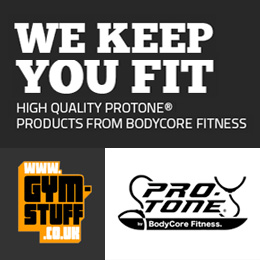Machine Horizontal Curl
Starting position:
- Select the weight you would like to lift and insert the pin into the designated hole of the plate stack.
- Lean onto the flat pad with your upper arms placed across the surface of the pad. The edge of the pad should be positioned adjacent to your axilla (armpit).
- Adjust the height of the seat accordingly so your axilla is located next to the edge of the pad.
- Extend your elbows (keeping a slight bend in elbows) and grasp the bar with a closed, supinated grip (palms facing upward).
- Place your hands on the bar approximately shoulder width.
Upward movement/concentric phase:
- Flex the elbows, lifting the handles toward you.
Downward movement/eccentric phase:
- In a slow and controlled fashion, allow the elbows to extend back to the starting position.
- Keep wrists straight throughout the exercise.
Exercise Data
FAQ'S & FACTS ABOUT Machine Horizontal Curl
What Is A Biceps Machine Horizontal Curl?
A Flat Pad Machine Curl is a resistance exercise, which involves the primary elbow flexors, the brachialis and biceps brachii. This particular machine is a variation of the biceps curl in which the upper arms are rested on a horizontal (flat) pad, preventing the movement of the shoulders while isolating the biceps. The resistance is provided by a pulley system with which you adjust the weight accordingly with a pin. This makes it easy for the lifter to manipulate the load they are lifting without having to rack bars and plates.
This exercise is performed seated, similar to preacher bench curl exercises except with greater shoulder flexion. Unlike traditional preacher bench curls, however, the pulley system provides a uniform resistance throughout the entire range of motion.
The concentric portion of the lift is elbow flexion, which involves the lifting of the weight. The eccentric portion is elbow extension, which involves the descent of the weight.
The shoulders are in a flexed position as arms are rested on the surface of a horizontal pad. This position significantly activates the biceps brachii long head (outer portion) when the elbow joint is near full extension (i.e. the beginning of the lift and the end of the descent), activating the short head (inner portion) of the biceps and brachialis for the latter portion of elbow flexion. Hypertrophy of the biceps long head helps develop the outer portion of the biceps.
Why Do Biceps Machine Horizontal Curls?
Flat pad machine curls strengthen and increase the size of the biceps brachii, brachialis and brachioradialis. It is a seated variation of the biceps curl that works through a shorter range of motion. Nonetheless, it targets the biceps from a different angle as the shoulder is in a flexed position. The resistance of the machine elicits significant biceps activation throughout the entire range of motion. Therefore, the machine curl helps lifters strengthen their biceps, improving their performance with free weight exercises.
Performing biceps curls on machines allows novice lifters to learn and develop biceps curl technique and strength. Intermediate and advanced lifters can benefit from implementing machine biceps curls into their regimen as machines can provide a variation in angle, grip and resistance. Although it is primarily an exercise for aesthetics, machine biceps curls also serve as an auxiliary exercise that can increase strength involved in other multi-joint exercises.
Anatomy Of A Biceps Machine Horizontal Curl
The biceps brachii is located on the front of the arm, originating at the shoulder and inserting in the elbow joint. It consists of two heads, the long head (outer portion) and the short head (inner portion). The long head tendon helps stabilize the shoulder joint and its origin is located at the tubercle and lip of the glenoid cavity of the scapula (shoulder blade). The short head origin is located at the coracoid process of the scapula. The long and short head unite as the muscle bellies run down the front of the arm. Both heads merge, sharing insertion into the radial tuberosity of the elbow joint.
The biceps brachii flexes the elbow joint and supinates the forearm. Supination refers to the simultaneous rotation of the wrist and elbow as the palm of your hand faces upward.
The brachialis lies underneath the biceps brachii, originating at the front of the lower end of the humerus bone. Its insertion is located at the coronoid process of the ulna at the elbow joint. The brachialis is a primary elbow flexor.
The brachioradialis aids the biceps brachii and brachialis, helping stabilize the elbow joint during biceps curls.
Although their contribution is minimal, forearm muscles, palmaris longus, flexor carpi radialis, and pronator teres contribute as weak flexors of the elbow joint.
Primary forearms flexors, flexor carpi radialis and flexor carpi ulnaris are stabilizers. Both insert at the elbow joint and attach at the metacarpals near the wrist.
Variations Of A Biceps Machine Horizontal Curl
One-arm machine curl.
How To Improve Your Biceps Machine Horizontal Curl
Focus on the concentric portion of the contraction, concentrating on “squeezing” at the end of the flexing portion.
Emphasis on eccentric contractions, prolonging the eccentric portion of the contraction, may also be incorporated in a training program focused on increasing strength. This should be implemented accordingly and with adequate muscle recovery as eccentric contractions cause substantial damage to muscle tissue.
It’s important to note that your repetition and set volume will depend on your goals (e.g. strength, hypertrophy, muscular endurance). It is also important to allow adequate recovery days in between biceps training to allow muscles to repair.
Common Mistakes When Doing Biceps Machine Horizontal Curls
Returning the weight to the starting position too quickly can threaten joint and tendon integrity. Performing the eccentric portion of the lift ballistically (e.g. dropping the weight on the way down, extending the elbows quickly) and/or hyperextending the elbows can result in biceps tendon injuries, wrist and/or elbow injuries.
It is important to note that exercise machines, in general, may not accommodate ergonomically to the varying heights, torso lengths and limb lengths of individuals. The flat pad, in particular, restricts movement and can place a significant amount of stress on the elbow joint, wrists and biceps tendon as the elbow nears extension. Adjust the seat height accordingly and ensure that you do not place your joints in any compromising positions against the weighted resistance.
Injuries Or Ailments & Their Effects Regarding Biceps Machine Horizontal Curls
If proper technique is not adhered to (e.g. dropping the weight quickly instead of controlling the descent on the eccentric portion of the lift), the likelihood of a biceps, wrist and/or elbow injury increases.
Although rare, biceps tendon rupture may occur if warm-up is not sufficient and/or if intensity (load) is increased inappropriately.
If proper recovery is not implemented between training days for optimal muscle repair of the biceps, the biceps tendon becomes inflamed. Without proper rest and treatment, the inflammation remains and results in biceps tendonitis.
Impingement syndrome and rotator cuff injuries, in general, are commonly associated with biceps tendonitis/biceps tendinosis. Therefore, it’s best to avoid biceps exercises when addressing impingement syndrome/rotator cuff injury unless advised by a physical therapist.




